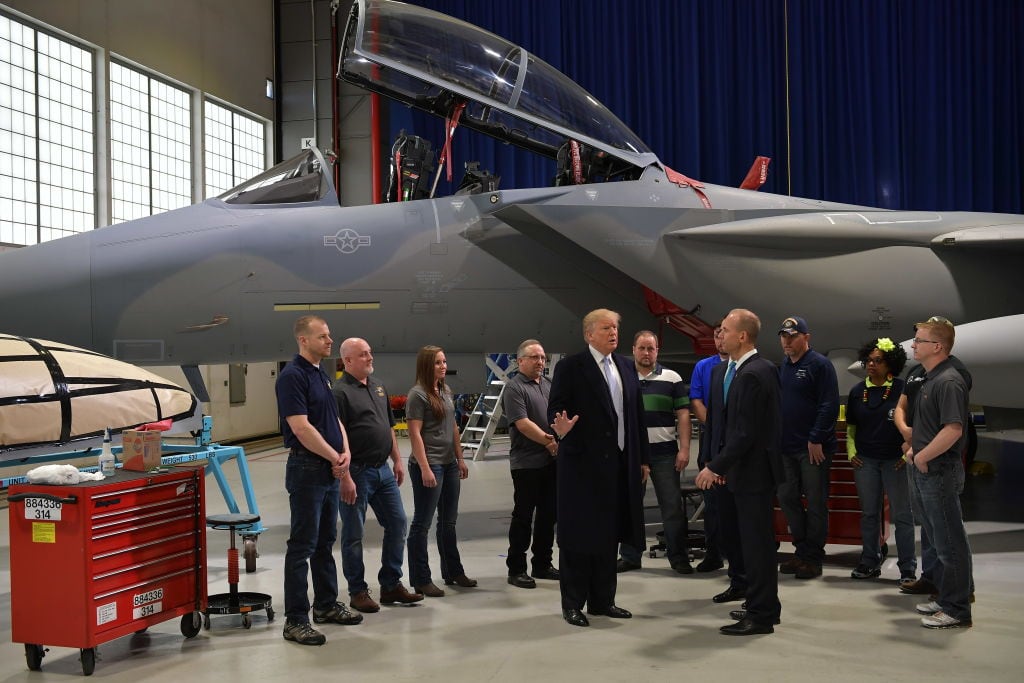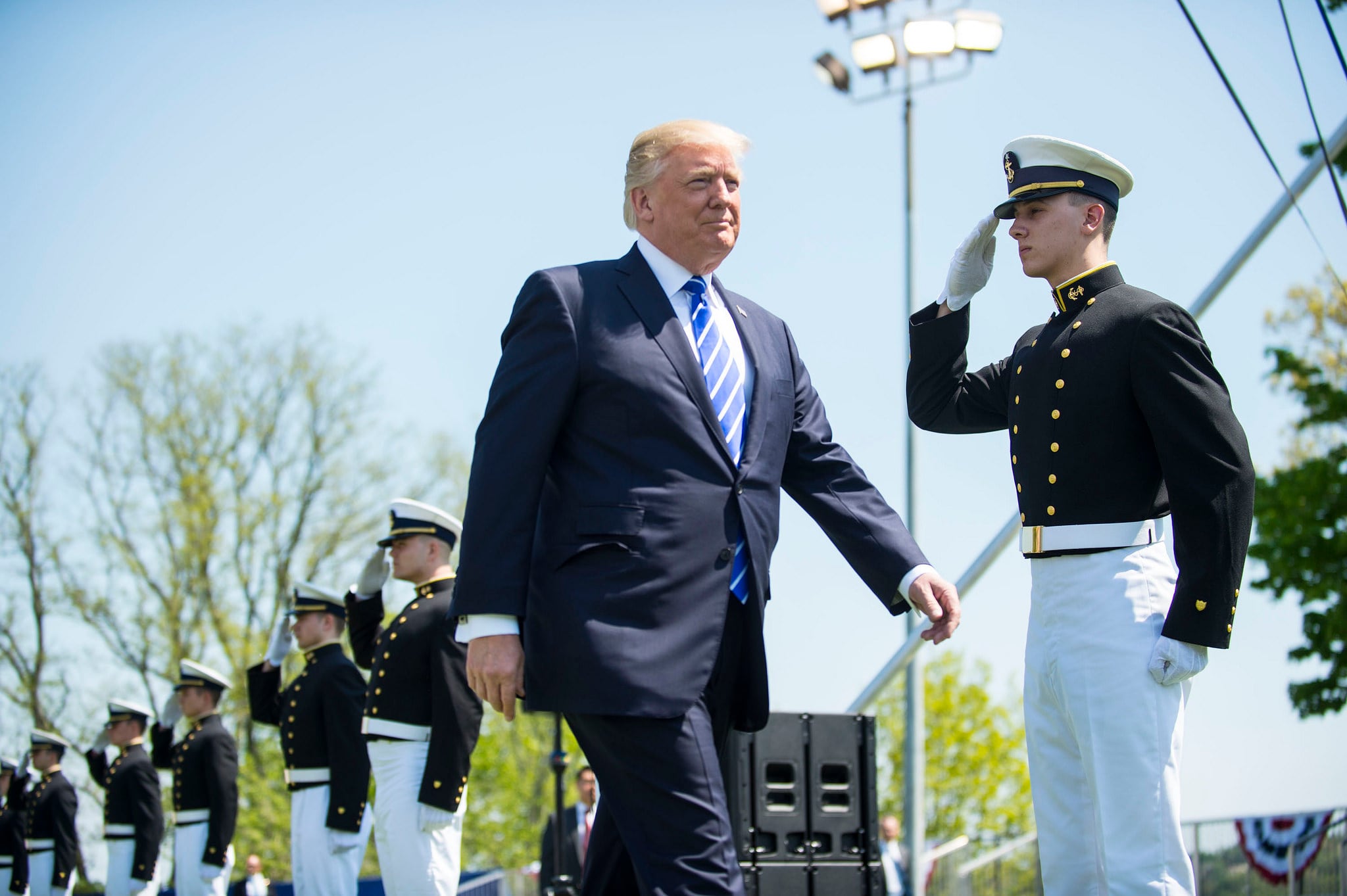WASHINGTON — The American defense-industrial base needs Pentagon budgets to grow at least 5 percent per year to remain healthy and stable, the industry’s leading trade group said in a report released Wednesday.
The report by the Aerospace Industries Association blames Budget Control Act cuts and Congress’ repeated deferral to continuing resolutions for a steep drop in the market’s number of prime vendors. It’s unclear exactly how smaller suppliers have been impacted, but “the detrimental impact of budget cuts have been felt throughout the supply chain,” the report reads.
Recent years marked by brief government shutdowns and lengthy continuing resolutions have yielded waste, disrupted major programs at key milestones and driven inefficient spending practices at the Department of Defense by forcing it to spend money faster, the report argues. That hurt the industrial base and produced a magnified effect at lower tiers of the supply chain.
“We can fix whatever acquisition problems we see, but if we don’t have stable, robust, balanced spending, our free-market economy will not be able to respond to DoD’s needs in a timely, effective way,” John Luddy, AIA’s vice president for national security policy, told Defense News. “It doesn’t all boil down to money, but it starts with that.”
The 5 percent figure intentionally hews to Defense Secretary Jim Mattis and Chairman of the Joint Chiefs of Staff Gen. Joe Dunford’s calls for sustained budget growth through 2023 to maintain the country’s military edge over competitors Russia and China, Luddy said.
AIA’s 10-page report contains 20 recommendations for Congress and the Trump administration, all part of AIA’s input into a governmentwide study aimed at fixing gaps in the U.S. defense-industrial base, which President Donald Trump ordered in July.
AIA, which represents more than 340 major aerospace and defense companies and their suppliers, has welcomed the Trump administration’s study and leaned in with its own industrial-base working group to aid the government.
“It’s giving a marquee level of interest to things we talk about every day,” Luddy said.
A government-spanning task force created by Trump’s executive order has since presented internal interim findings, which identified risks in the industrial base. The government’s effort has yet to publicly present its finding, but its conclusions are likely to influence future defense policymaking on Capitol Hill and within the administration.
Upcoming for the study is a series of war games to show how well certain industry subsets are prepared to surge in war scenarios and may yet include a survey of defense firms.
RELATED

Broadly, AIA’s recommendations for a robust defense-industrial base cover stable congressional appropriations, streamlined military acquisitions, targeted technological investments and a skilled workforce.
“Our nation has entered an era of great power competition in which there will not be time to ‘play catchup’ or surge to meet our war fighters’ needs,” the report warns.
A two-year budget deal contained a big boost for national defense, setting top lines for the Pentagon at $629 billion for 2018 and $647 billion for 2019. But AIA remains cagey, as Budget Control Act caps for 2020 and 2021 remain in place at $576 billion and $591 billion respectively.
“We’ve seen it happen where they get to the edge of the cliff, and then they pass an agreement — and this [year] there was a very positive development for defense,” Luddy said of Congress’ budgeting process. “We have to hope that happens again, but we have to prepare for the worst.”
AIA not only recommends repealing Budget Control Act caps for defense spending, but also embracing lot buys and multiyear procurement vehicles. Citing disproportionate reductions to the DoD’s research, development, test and evaluation and procurement accounts, AIA advocates stronger support for long-term R&D and infrastructure investments.
Budget austerity and cost-based acquisition policies have left the defense industry feeling squeezed and “serve to restrict the competitiveness of the supply base, crowd out and tie up resources for investment in R&D, personnel and facilities in government and industry, and discourage new entrants and independently-funded technologies from being offered to DoD,” the report reads.
“Some acquisition practices aimed at controlling cost have merely established non-value-added bureaucratic requirements, tied up cash flow, erected barriers to commercial technology and investment, and imposed a de facto lowest price, technically acceptable environment,” the report states.
As DoD officials seek an edge in new technologies — offensive and defensive cyber, hypersonics, and access to trusted microelectronics — AIA points to Russia’s efforts to dominate in electronic warfare and China’s efforts to dominate in semiconductors and other technologies.
RELATED

Trusted microelectronics and hypersonics respectively require intensive investment in foundries and infrastructure — especially test facilities — that cannot be recouped outside of the DoD, the report warns.
“In these areas industry will largely rely on [independent] R&D funds, which support industrial base health and national security objectives by enabling industry to take risk on defense-unique solutions,” the report reads. “DoD should remove any barriers that directly or indirectly limit industry’s ability to flexibly utilize [independent] R&D and earn sufficient returns on those investments.”
Among the 10 recommendations specifically aimed at fixing the DoD’s often-sluggish acquisitions process, AIA wants to see the department establish an overarching strategy for intellectual property — a hot-button issue, as the DoD’s been criticized for overreach in its pursuit of access to intellectual property.
AIA also argues the DoD’s blanket requirements for vendors to provide technical data, software rights and other information could undermine its efforts to attract new technology. Instead, the DoD needs to ensure its workforce is “asking for the right IP for the right reasons based on a program’s acquisition strategy and sustainment considerations,” the report reads.
Those recommendations come as the DoD absorbs fundamental changes to its acquisition hierarchy mandated by Congress.
The report also takes aim at the department’s contract audit regime, which it regards as punitive and a hindrance to speedy purchasing.
“We’re not advocating that DoD or Congress give up their oversight, but everybody knows there are far too many people involved in every decision, far too many decision points on most things,” Luddy said. “I think the department is working very hard on that also.”
Joe Gould was the senior Pentagon reporter for Defense News, covering the intersection of national security policy, politics and the defense industry. He had previously served as Congress reporter.






